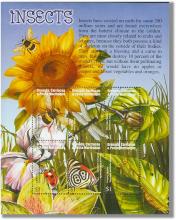Killing Bees: Are Government and Industry Responsible? Earth Focus reports
Honey bees, the essential pollinators of many major US crops, have been dying off in massive numbers since 2006. This threatens the American agricultural system and the one in twelve American jobs that depends on it. There is growing evidence that a new class of pesticides -- nerve toxins called neonicotinoids, which are used on most US crops including almost all corn -- may be toxic to bees. The Environmental Protection Agency allowed neonicotinoids on the market without adequate tests to determine their toxicity to bees. Environmentalists want neonicotinoids banned until needed safety tests are done. While the US government is slow to act and neonicotinoid sales reap billions for the chemical industry, bees continue to die. Earth Focus reports. Link: http://www.linktv.org/video/8123/killing-bees-are-government-and-indust…










